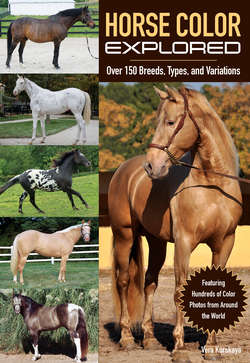Читать книгу Horse Economics - Vera Kurskaya - Страница 6
На сайте Литреса книга снята с продажи.
CHAPTER 1:
Introduction to Horse Color What Is Horse Color?
ОглавлениеTo begin, it is necessary to offer my own definition of horse color. A horse’s “color” is genetically determined as the sum of color characteristics of the entire integument (natural outer covering of the animal), including hair, skin, hooves, and eyes.
I must emphasize that, first of all, we must both consider and come to understand the genetic approach to horse color. Second, it is important not to limit ourselves by paying attention to the horse’s hair (coat) color only. Of course, you need to look at the horse in order to determine his color, but simultaneously, for a precise determination, you must also understand the genetic mechanisms of the formation of color, special features of pigment production, and how pigment is distributed over the body. (The latter especially helps during determination and differentiation of colors connected with the admixture of white hair.) Finally, an analysis of a horse’s ancestry helps further when faced with unresolved questions regarding color and pattern.
The color in horses and other mammals is stable over the course of the animal’s entire life. Changes that can modify the color characteristics of the hair cover (coat) of an individual horse during his lifetime are simply variations in one and the same color. While it is difficult to determine “final” coat color in a foal, specific diagnostic regularities (characteristics) can be observed, even at a very young age. In fact, color is a combination of several signs and characteristics. This is true regarding any color, even if its description seems deceptively simple. For example, pigmentation of hooves must be considered in coat color determination, since in certain cases Appaloosa color can be verified only with the help of a visible pattern of stripes on the horse’s hooves.
